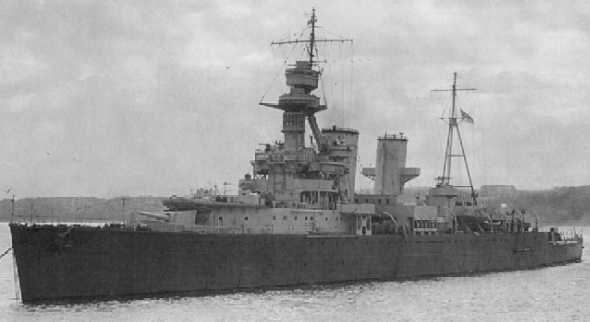|
A total of 44 guns were manufactured. As the Hawkins class were gradually converted to other weapons during their careers, many of these guns became surplus to naval requirements and 17 were then transferred to coastal artillery. Three were at South Shields between July 1941 to August 1943, seven went to the Dutch West Indies, three to Canada and five to Mozambique. However, two of the guns intended for Mozambique were lost in transit in 1943. These were replaced by transferring two guns from South Shields. The ballistic performance of the Mark V was about the same as the earlier 7.5" (19 cm) Mark I, but they were of improved construction, being of tapered inner A tube, A tube, full-length wire, full-length jacket breech ring, shrunk collar and breech bush. They also had a different form of rifling and used Asbury breech mechanisms. |

HMS Hawkins moored at Shanghai, China,
about 1927
|

HMS Frobisher in 1945
|